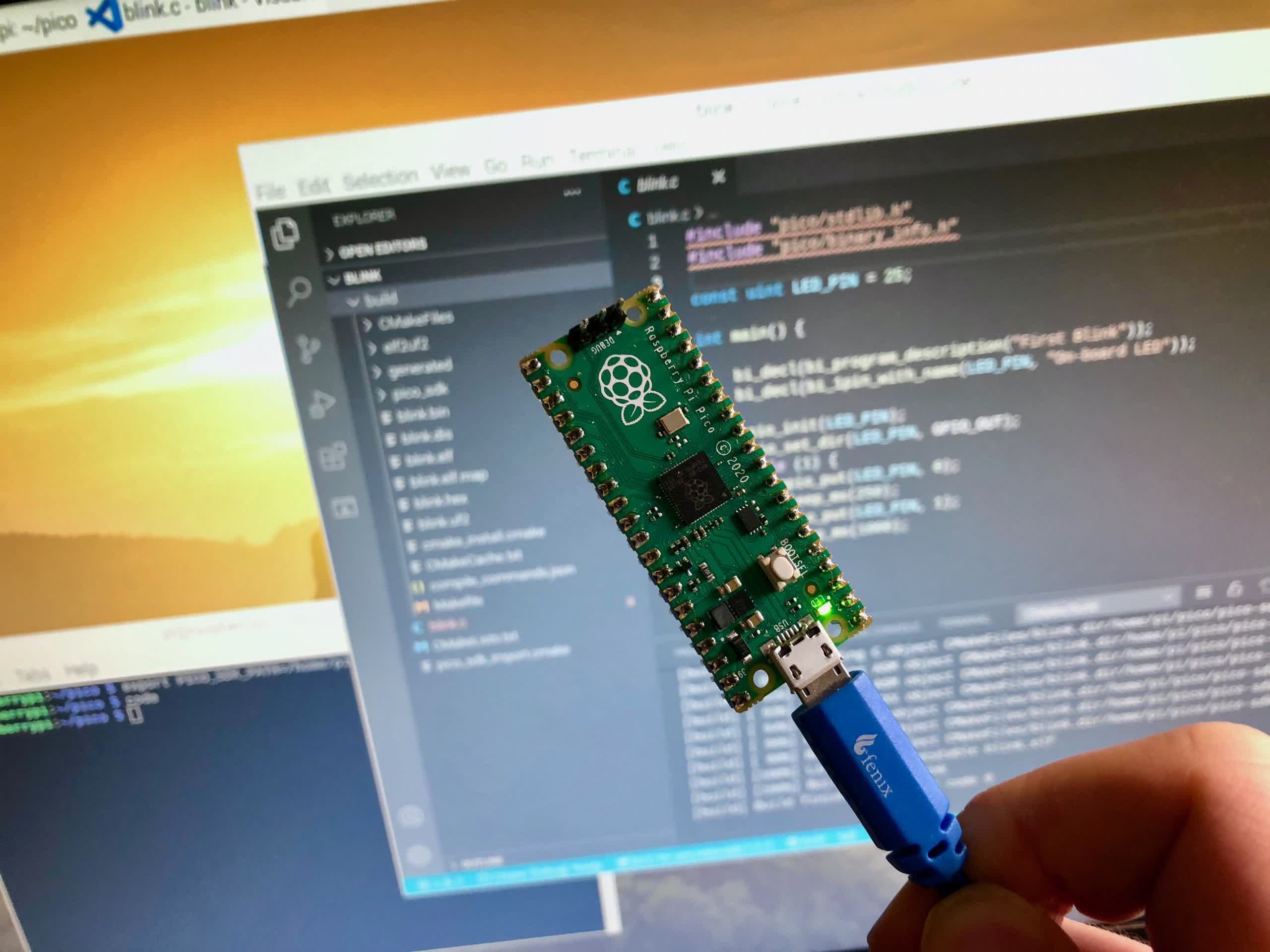In context: Pimoroni is a UK-based company specializing in Raspberry Pi (RP) products. It mainly creates and sells (or resells) components for building RP gadgets, like the Pimoroni Unicorn—an 8x8 RGB LED HAT array. However, it has delved into gaming electronics occasionally, like the Picade arcade cabinet, the "32blit" portable gaming console, and the tiny PicoSystem handheld.

Pimoroni's latest gaming creation is a "stick-like console" that plugs into any HDMI-compatible television or monitor. Last week, the company revealed the project codenamed DV Stick on the Tom's Hardware Pi Cast (below). Despite not having a working prototype—it is currently set up on a breadboard—Pimoroni says it should be available within a few weeks.
The system features two RP2040 chips (Pico), each with an undisclosed amount of PSRAM. One acts as the CPU, and the other "drives the display." According to Pimoroni co-founder Jon Williamson, the design allows the chips to display graphics more efficiently.
"Each of the chips has a PSRAM chip for the frame buffer and, on VSync, they swap," Williamson said. "So we have an analog mux that basically swaps the chips between the two, so the application processor writes into the frame buffer in one RAM chip then, when VSync occurs in the display, it hands that RAM chip over to the display processor, which hands its RAM chip back to the application processor so the display outputs on the screen."
Williamson didn't mention the system's native resolution. Tom's Hardware presumes it will be 1080p, even though Pimoroni's previous gaming offerings have been much lower. The PicoSystem was 240x240 on a 1.54-inch SPI IPS LCD. The 32blit sported a 3.5-inch display with a native resolution of 320x240. Finally, the Picade came with 1024x768 graphics on an 8-inch or 10-inch IPS display. The DV Stick is compatible with all PicoSystem games. However, running 240x240 games at 1080p is likely to look like rubbish.
In addition to the HDMI port, the DV Stick also features USB and Bluetooth connectivity for a controller or keyboard. Like its other game systems, it relies on homebrewed titles developed by the Raspberry Pi community. So Pimoroni designed the DV Stick to also act as a devkit. Users can boot directly into the MicroPython REPL command line to develop games in C++, MicroPython, or CircuitPython.
Pimoroni indicated that the DV Stick—short for "digital video stick"—could be used for applications other than games, such as information kiosks or displaying different types of media. Williamson said he wants to toss it out there and see what the community does with it.
"It's a bit of a weird one, but we kind of like the concept so much that we didn't concern ourselves too much with what it's useful for," Williams said. "We just threw everything that sounded fun on it and thought we'd see what happens."
Pimoroni isn't aiming to compete with mainstream console gaming. It only expects RP enthusiasts to buy the DV Stick for small community-shared projects or home learning and coding. The company doesn't have a price to share, but it would be reasonable to suspect it to go for less than its other game systems considering users will supply the controllers and displays.
https://www.techspot.com/news/97917-dual-raspberry-pi-chips-power-hdmi-gaming-console.html